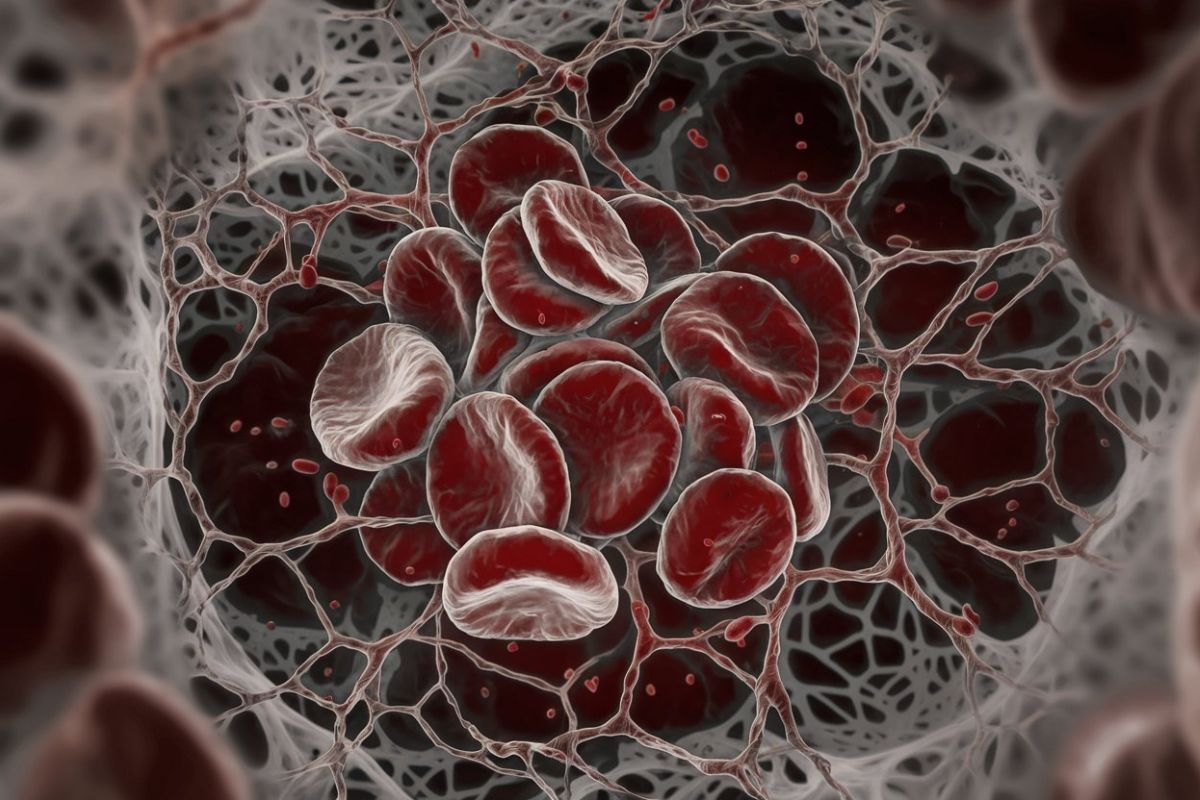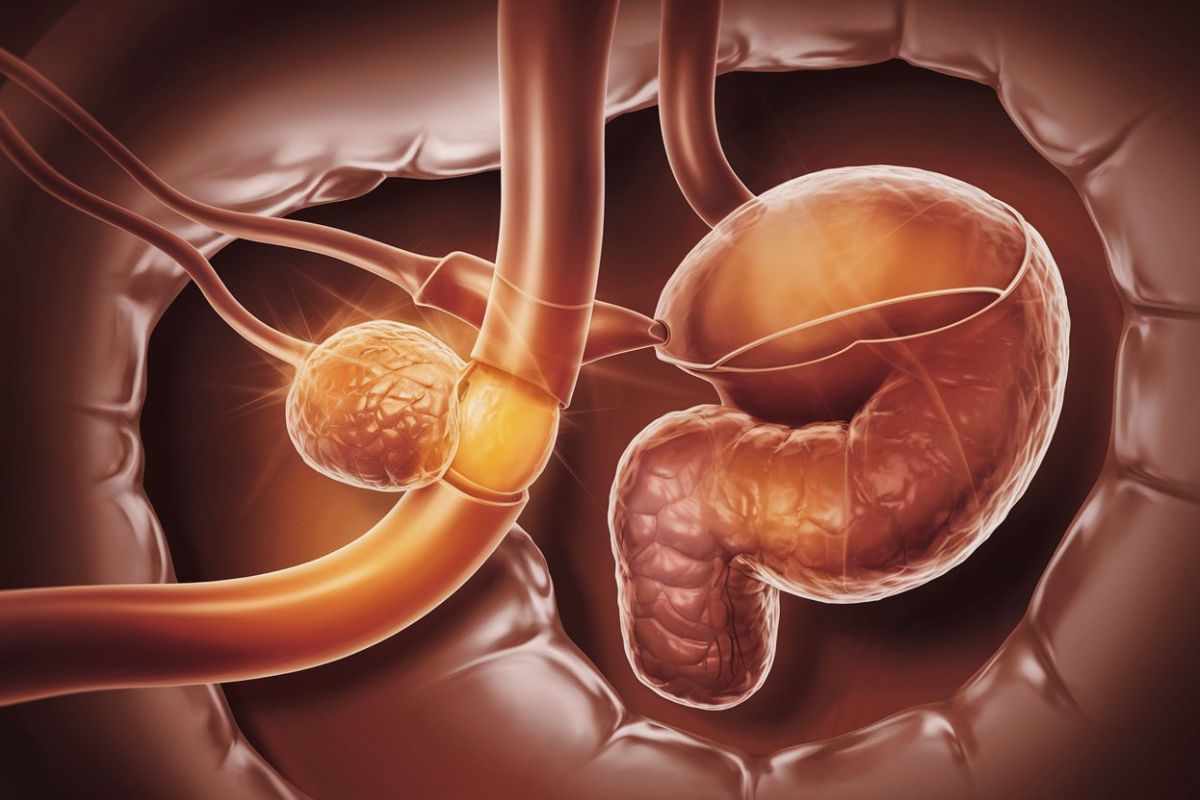
What is Myomatous Erythrocytosis Syndrome? Myomatous Erythrocytosis Syndrome (MES) is a rare gynecological condition that combines uterine fibroids with elevated red blood cell counts, known as polycythemia. This unusual syndrome sees hemoglobin levels normalize after the fibroid's removal. MES was first identified in 1953 and remains extremely rare, with only about 50 cases reported. Symptoms can include shortness of breath, menstrual changes, skin discoloration, and abdominal distension. The exact cause is unknown, but theories suggest vascular shunts or abnormal erythropoietin production by the fibroid. Treatment typically involves surgical removal of the fibroid, either through hysterectomy or myomectomy.
Key Takeaways:
- Myomatous Erythrocytosis Syndrome (MES) is a rare condition combining uterine fibroids and increased red blood cells. It requires a multidisciplinary approach for diagnosis and treatment, and further research for better understanding.
- Recognizing MES is crucial for early diagnosis and effective treatment. Healthcare providers should be aware of this rare condition to provide timely care and improve patient outcomes.
What is Myomatous Erythrocytosis Syndrome?
Myomatous Erythrocytosis Syndrome (MES) is a rare condition that combines the presence of uterine fibroids with an unusual increase in red blood cells. This syndrome is fascinating due to its rarity and the unique way it affects the body. Here are 30 facts to help you understand MES better.
-
Definition and Prevalence
MES is an uncommon gynecological disorder linked with isolated polycythemia and uterine fibroids. Only about 50 cases have been documented as of 2023. -
Diagnostic Criteria
To diagnose MES, doctors look for elevated red blood cells, hemoglobin, and hematocrit, the presence of a uterine fibroid, and normalization of hemoglobin levels after fibroid removal. -
History of the Condition
The first case of MES was reported by Thomson and Marson in 1953. Since then, only a few cases have been published, highlighting its rarity.
Symptoms and Signs
Understanding the symptoms can help in early detection and treatment. Here are some common signs of MES.
-
Dyspnea
Patients often experience shortness of breath due to the increased red blood cell mass. -
Menstrual Irregularities
Changes in menstrual cycle patterns are common among MES patients. -
Skin Discoloration
Increased hemoglobin can cause noticeable changes in skin color. -
Abdominal or Pelvic Distension
The fibroid can cause enlargement of the abdomen or pelvic area.
Causes and Theories
The exact cause of MES remains a mystery, but several theories have been proposed.
-
Vascular Shunts
The presence of vascular shunts within the myoma might lead to increased erythropoietin production. -
Large Uterine Size
A large uterus might interfere with pulmonary ventilation, contributing to erythrocytosis. -
Myoma Site
The location of the myoma could influence the degree of erythropoietin production. -
Alteration in Red Cell Life Span
Changes in red cell life span might also play a role in the observed erythrocytosis.
Role of Erythropoietin
Erythropoietin (EPO) is a hormone that stimulates red blood cell production. In MES, its role is crucial.
-
Erythropoietin Production
Aberrant EPO production from the myomatous tissue is believed to be responsible for the erythrocytosis seen in MES. -
Immunochemical Staining
Myoma tissue often shows strong positivity for EPO, indicating ectopic production.
Laboratory and Histopathologic Findings
Lab tests and tissue examinations provide essential clues for diagnosing MES.
-
Elevated Hemoglobin
High levels of hemoglobin are a key indicator. -
Elevated Hematocrit
Increased hematocrit levels, the proportion of blood volume made up by red blood cells, are also common. -
Elevated Red Blood Cell Count
A higher number of red blood cells is typically observed. -
Histopathologic Features
Myomatous tissue may show smooth muscle hyperplasia, fibrosis, and degenerative changes.
Treatment Options
The primary treatment for MES involves surgical removal of the fibroid.
-
Hysterectomy
This procedure removes the entire uterus and is often performed in postmenopausal women or when the fibroid is large. -
Myomectomy
This surgery removes the fibroid while preserving the uterus, preferred in premenopausal women who wish to maintain fertility.
Surgical Complications
Surgery comes with its own set of risks and complications.
-
Perioperative Bleeding
Excessive bleeding during or after surgery is a significant concern. -
Urogenital Injuries
Damage to the urinary or reproductive organs can occur during surgery.
Case Reports and Multidisciplinary Approach
Case reports and a team approach are crucial for understanding and managing MES.
-
Case Reports
Documented cases often show resolution of erythrocytosis after fibroid removal. -
Multidisciplinary Team
Collaboration between gynecologists, hematologists, and other specialists is essential for effective treatment.
Erythropoietin Activity and Bone Marrow Evaluation
Further tests help confirm the diagnosis and understand the condition better.
-
Erythropoietin Levels
Elevated EPO levels are often found in MES patients. -
Bone Marrow Evaluation
This test may show an increased number of red blood cell precursors, indicating higher erythropoiesis rates.
Blood Volume and Erythrocyte Life Span
These evaluations help rule out other causes of polycythemia.
-
Blood Volume
Tests confirm the presence of secondary erythrocytosis due to the myomatous uterus. -
Erythrocyte Life Span
Changes in the life span of red blood cells can also be a factor.
Clinical Presentation and Differential Diagnosis
Understanding how MES presents and differentiating it from other conditions is crucial.
-
Clinical Presentation
Symptoms can vary widely, from severe dyspnea to being asymptomatic. -
Differential Diagnosis
Other causes of secondary erythrocytosis, like renal cell carcinoma, must be ruled out.
Importance of Recognition and Future Research
Recognizing MES and conducting further research is vital for better management.
- Recognition
Awareness among healthcare providers can lead to earlier diagnosis and more effective treatment.
Understanding Myomatous Erythrocytosis Syndrome is essential for timely diagnosis and treatment. This rare condition requires a multidisciplinary approach and further research to fully comprehend its complexities.
Final Thoughts on Myomatous Erythrocytosis Syndrome
Myomatous erythrocytosis syndrome (MES) is a rare condition linking uterine fibroids with elevated red blood cell counts. Recognizing MES is crucial for avoiding unnecessary tests and ensuring timely treatment. The primary treatment involves surgically removing the fibroid, which often normalizes hemoglobin levels. Symptoms like shortness of breath, menstrual changes, and skin discoloration can signal MES. Though the exact cause remains unclear, abnormal erythropoietin production from the fibroid is a leading theory. A multidisciplinary approach, involving gynecologists and hematologists, is essential for effective management. Future research should focus on understanding the mechanisms behind MES and improving diagnostic methods. Awareness among healthcare providers can lead to earlier diagnosis and better patient outcomes.
Frequently Asked Questions
Was this page helpful?
Our commitment to delivering trustworthy and engaging content is at the heart of what we do. Each fact on our site is contributed by real users like you, bringing a wealth of diverse insights and information. To ensure the highest standards of accuracy and reliability, our dedicated editors meticulously review each submission. This process guarantees that the facts we share are not only fascinating but also credible. Trust in our commitment to quality and authenticity as you explore and learn with us.


